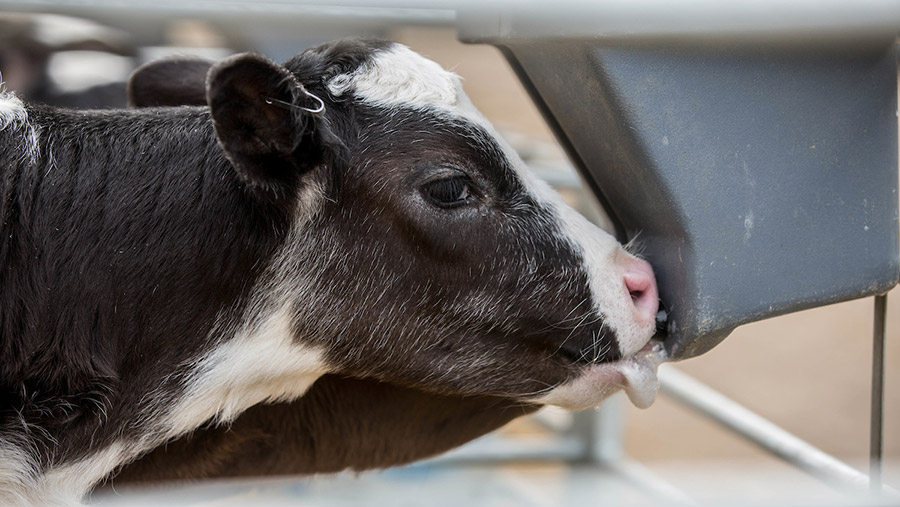Q&A: Pneumonia in calves and how to combat it
 © Tim Scrivener
© Tim Scrivener Young calves have a big surface area for their body size, which means they can lose heat very quickly.
This, combined with the fact their immune system is not yet fully developed, puts them at risk from a range of diseases.
Pneumonia is a particular risk, especially in damp, wet conditions, with studies showing the greatest risk period is from November to April.
Below, Sean Hughes from Shropshire Farm Vets explains how to prevent and treat this disease.
What is pneumonia?
A respiratory disease caused by inflammation of the air sacs in the lungs.
What causes it?
Multiple infections cause pneumonia. The most common viruses that cause pneumonia in calves are infectious bovine rhinotracheitis (IBR), parainfluenza-3 (PI3), bovine respiratory disease (BVD) and bovine respiratory syncytial virus (BRSV). The main bacterial causes are mycoplasma, pasteurella and haemophilus.
What are the symptoms?
Early symptoms:
- Lethargy
- Reduced appetite
- Increase in temperature (above 39.5C)
Severe symptoms:
- Increased respiratory rate or laboured breathing
- Inflammation of the lungs
- Coughing/panting
- Discharge from the nostrils
- Frothing at the mouth
Treatment?
If you can spot it early and the calf only has a temperature, you can just give it a non-steroidal anti-inflammatory drug to help reduce inflammation. Studies have shown this to be effective.
But calves with severe symptoms will require antibiotics.
How can you prevent it?
- Provide sufficient quality colostrum at birth: 10% of bodyweight fed within the first three hours of life. Test colostrum using a refractometer (aim for above 22%)
- Vaccinate animals to increase immunity
- Improve housing: ensure calves are in a draught-free area with adequate ventilation to remove moisture. Porous walls can harbour bugs so consider using a resin coating or plastic sheets. Concrete panels can be cold. Locate feeders and water troughs on the outside of pens to prevent bedding from getting wet.
- Hutches are good because they give you good isolation from disease and you can move them. Ideally, you should locate them on a concrete pad with a slope for drainage or use gravel to allow good drainage.
- Temperature: provide plenty of dry straw to keep calves warm. Straw is the best bedding because it’s super absorbent and allows calves to nest.
- At less than 15C, calves aged two weeks and under will feel the cold so use a jacket
- At less than 10C, calves aged three to eight weeks will feel cold so use a jacket
- If the temperature is colder at night and warmer in the day, take jackets off and put them back on
- Have a thermometer in the shed to check the temperature
- For every 5C drop in temperature below 10C, calves require an additional 50g of milk powder per day
- Have a clear protocol so all staff know what to do in colder weather
- Don’t overstock
- Ensure calves are receiving adequate feed and water to achieve target growth rates.
See also: Better calf housing advice
Should you vaccinate?
Vaccination won’t eliminate the risk, but it will help the calf cope with the infection and get over it quicker.
Eradicating BVD and IBR from your adult herd will help.
How can you reduce the risk if you buy in?
- Buy from a known source if possible
- Buy from as few sources as possible
- Ensure calves have had adequate colostrum (bloods can be taken within the first week of life to check the volume of colostrum antibodies that have been absorbed into the calf’s bloodstream. Ask your vet for more details).
